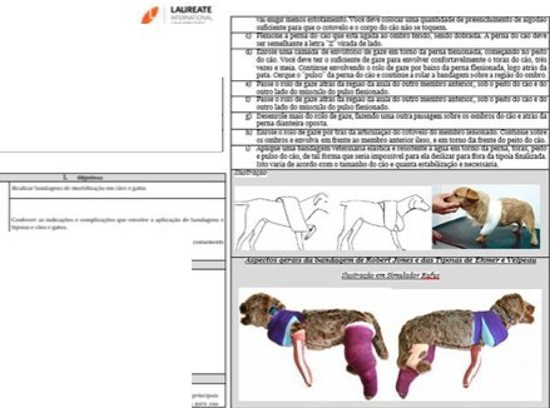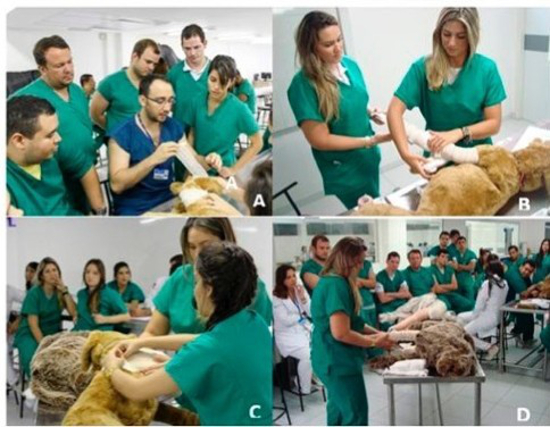The Team-Based Learning Application (TBL) in Development of Skill: The Immobilization of Members on Small Animals
R. de Souza Mendes1; R. Tenorio Padilha1; A.L. de Lima da Silva Arauja2; E. Lucena de Oliveira3; L. Tinoco Fonseca4; A.C. de Paiva4; J. Lucia Correia4; J. Brandao da Costa4
Introduction
The active teaching methodologies to be intensified with the emergence of new strategies that can favor an autonomy of the student.
Objectives
The objective is to present the experience of the application of team based learning (TBL) as learning methodology for the development of technical bandage, curricular unit of Veterinary Medicine Graduate, Potiguar University (UNP), Natal, RN, Brazil.
Methods
For the application of TBL student groups were used interacting as teams in learning environments. TBL was carried out in three phases. At first, the students received the material for extra class self-study. The second phase was carried out in presential classroom with individual test application and group, then the discussion and feedback on the subject studied. The third phase involved the application of the concepts learned, where the students perform practical the banding procedure, using the simulation-skills training, following the steps of demonstration of skill, exhaustive practice and practice under supervision, to the techniques of Robert Jones, Velpeau and Ehmer. At the end of the phases, it is the assessment to verify the achievement of learning objectives per classmates and teacher, using an assessment rubric of bandage skill, one for each technique.
| Figure 1 | 
Phase 1: Skills training. A - Description of the scenario. B - Description of the bandaging procedure. |
|
| |
| Figure 2 | 
Implementation of the practical procedure of bandage in dogs: A - Demonstration, B - Practical application, C - Practical evaluation, D - Debriefing and verification of achievement of learning objectives.
|
|
| |
Results
The methodology provided a facilitator and interactive environment, where the student at the center of the learning process, presents reach the proposed objectives aligned with the criteria for evaluating the banding skill in the three techniques.
Conclusions
The TBL provided an effective yield of the learning of the techniques of bandage in small animals.